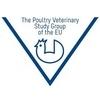Explore all the information on
Viral diseases in poultry
If you ask poultry producers what damage viruses can do to their business, they will understandably think mostly about major diseases such as avian influenza, Gumboro disease or respiratory infections such as Infectious Bronchitis virus. However, this is merely the tip of the iceberg. Viral challenges can be the triggers for a whole range of problems which may never even appear as clinical disease but can have an even more devastating effect on overall flock performance, production and profits. They can affect one or more of the birds’ body systems, the most significant of which are the respiratory tract (lungs and air sacs), the skeletal system (bones and joints) or the intestinal tract (affecting gut function). Although other factors such as environment, nutrition and management play an important role in the full expression of diseases affecting these systems, the most significant underlying trigger is usually an infectious agent, and the most potent of these are undoubtedly viruses.
Dr. Sjaak de Wit,immunologist and poultry veterinarian at GD Deventer, The Netherlands, speaks about Infectious Bursal Disease (IBD) at the International AMEVEA seminar in Peru, 2013. ...
Comments : 3
Recommendations: 1
Rodrigo Gallardo (UC Davis) discussed genetic variants of reoviruses, antigenicity and pathogenicity, during IPPE 2019 in Atlanta, USA....
Comments : 0
Recommendations: 2
Introduction Infectious bronchitis in hens (BIG), caused by an avian corona virus, the virus of infectious bronchitis in hens (VBIG), is a highly infectious disease, causing huge economic losses in the poultry section, even in Brazil. The protection of newly born chicks against this agent, depends of the innate immunity and of the maternal antibodies, acquired, in a passive manner, through the yolk sac (Tizard, 2009). It...
Comments : 2
Recommendations: 0
Introduction Infectious bronchitis (IB) is primarily a respiratory disease of chickens but with potential to cause more widespread infection in the urinary and reproductive tracts in chicken leading to significant production losses in commercial broiler and layer flocks worldwide [1]. The causative infectious bronchitis virus (IBV) belongs to the family Coronaviridae. The disease is usually characterized by high morbidity and low mortality in mature birds, whereas in naive young...
Comments : 2
Recommendations: 1
Mini Review
Among the possible infectious agents that affect poultry, diseases of the respiratory tract are considered the main health problem, causing both an increase in the number of carcass condemnations and a decrease in the productivity of the flocks [1]. This situation can be partially justified by the avian anatomical characteristics and the propensity to the diseases [2,3]. If the avian evolutionary adaptation makes respiratory efficiency superior to that of...
Comments : 0
Recommendations: 2
Introduction Avian leucosis virus (ALV) is belonging to the family Retroviridae, subfamily Orthoretrovirinae, genus Alpha retrovirus. Exogenous avian leucosis viruses(ALV) are classified into A,B,C,D and J subgroups based on their host range, cross-neutralization and viral interference. They can induce different path types of neoplastic diseases in chickens (Fadly and Payne. 2003). Among these subgroups, subgroup J,A and B are more common than other subgroups in chickens(Cui et...
Comments : 0
Recommendations: 0
INTRODUCTION
Infectious bursal disease virus (IBDV) is a major cause of economic losses in the poultry and can be involved in mortality, immunosuppression and poor technical performance without clear clinical signs. However, these signs are not specific to IBDV. Therefore, diagnostic tools are needed to identify IBDV infections in relation to a clinical or subclinical problem in the field....
Comments : 3
Recommendations: 0
1. INTRODUCTION Avian nephritis virus (ANV) is an etiological agent of growth retardation of young chickens by causing interstitial nephritis (Imada et al., 1979). Antibodies against ANV have been found in chicken and turkey flocks in the UK and Japan, suggesting a broad distribution (Nicholas et al., 1988; Takase et al., 2000). It is originally considered to be a picornavirus, was later characterized as an avian astrovirus based on its nucleotide sequence (Imada et al.,...
Comments : 2
Recommendations: 0
How to control secondary colibacillosis after IB, Became more of an issue than the IB itself. I am Badly Suffering due to secondary infection this 4th broiler flock hit by IB. IB is cure but secondary colibacillosis make my bird crazier Specially Suffering due to e-coli .Fatty LIVER and kidney disorder, bird reduce the feed intake Please advise me how to treat boiler bird Regards Aftab Anwar. ...
Comments : 29
Recommendations: 0
INTRODUCTION The bursa of Fabricius (BF) is a lymphoid organ, of lympho-epithelial structure. It is a site of B lymphocyte repertoire differentiation and maturation, located in the dorsal terminal part of the cloacae of the birds (Toivanen, et al 1987; Alloui & Sellaoui 2012). The BF is the essential (primary) target of Gumboro disease virus (IBDV). This disease manifests as acute and subclinical forms in chicks of age 0-3 weeks with immunosuppression or also in...
Comments : 0
Recommendations: 0
INTRODUCTION Inclusion body hepatitis (IBH) was first described in 1963 in the USA (Helmboldt and Frazier, 1963). Then after, the disease has been reported in many countries worldwide. It is a sporadic disease condition caused by several serotypes of fowl adenoviruses (Franco et al., 1974; Ferran, 2000; Fitzgerald, 2008; Gomis et al., 2006; Choi et al., 2012; Dar et al., 2012). The...
Comments : 13
Recommendations: 0
The commercial Saccharomyces cerevisiae fermentation product XPC™, often used as feed additive in poultry production, has been associated with enhanced immune functions. We evaluated immune responses and protection after IBV challenge in naïve and infectious bronchitis virus (IBV)- vaccinated specific-pathogen-free white leghorn chickens (groups n=50 each) receiving XPC at feed-additive concentrations of 2 lb/ton or 3 lb/ton.
...
Comments : 2
Recommendations: 0
.jpg&w=3840&q=75)

Analyze over 40 different feed raw materials with AMINONIR® Portable | Evonik
Suggested link
Dr. Holly Sellers (University of Georgia) speaks on viral diseases, prevention and control, during the 5th IHSIG Symposium on Poultry Intestinal Health in Bangkok, Thailand....
Comments : 3
Recommendations: 5
HI there, We are facing a complex disease situation in most of the areas of Pakistan, which is of respiratory in nature showing redness of trachea with mucus and fibrinous plugin bifurcation, MG growth over lungs, yellow to white diarrhoea with mortality of 10% to 50% and morbidity starts from fan side of control sheds surprisingly leaving the pad area birds with very light infection, morbidity and mortality. After three days this disease transfers towards pad areas and after another 3 days...
Comments : 9
Recommendations: 0
Brian Jordan (University of Georgia) talked about the Ark99 strain and what was found out during the investigation, regarding mutations in the genome, during IPPE 2018 in Atlanta, USA....
Comments : 0
Recommendations: 3
Introduction: The purpose of this study was to demonstrate the presence of virus disease of infectious Laryngotracheitis (ILT) in Algeria in laying hen farms; through the demonstration of seroconversion signing a recent viral passage and also a comparative study cost / benefit of vaccination against this disease. Up ‘til 2011, no study was conducted to highlight the presence of the...
Comments : 12
Recommendations: 0
Introduction All known viruses share an absolute requirement for host cell ribosomes and are exquisitely dependent on cellular translation factors to meet their synthetic needs. Faced with this dependency, viruses have evolved strategies to commandeer the host translational apparatus [1, 2]. Studies of viral subversion of host protein synthesis machinery have not only revealed key steps in viral pathogenesis, but also...
Comments : 0
Recommendations: 0
Infectious bronchitis (IB) is a globally distributed avian disease that represents one of the most persistent sanitary problems to the commercial poultry industry. The intensive production of high-density bird populations promotes IB transmission and, in spite of intensive control programmes, outbreaks are extremely frequent in commercial flocks (USDA, 2014). The aetiological agent of IB is the infectious bronchitis virus (IBV), belonging to the genus Gammacoronavirus within...
Comments : 0
Recommendations: 3
Introduction Avian leucosis virus (ALV) is belonging to the family Retroviridae, subfamily ortho retrovirinae, genus Alpha retrovirus. Exogenous avian leucosis viruses(ALV) are classified into A,B,C,D and J subgroups based on their host range, cross neutralization and viral interference. They can induce different path types of neoplastic diseases in chickens (Fadly and Payne. 2003). Among these subgroups, subgroup J,A...
Comments : 0
Recommendations: 2
Introduction Cytosines within the genome not only constitute part of the genetic code but are also amenable to chemical modification making them a central conveyer of epigenetic information. Methylation of the fifth position of cytosine (5-methylcytosine, 5mC) is an evolutionarily conserved epigenetic modification [1] which helps to maintain genome stability and acts as a suppressive mark for gene expression [2]. It is...
Comments : 0
Recommendations: 1




.jpg&w=3840&q=75)










.jpg&w=3840&q=75)



















